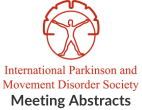Transcranial magnetic stimulation study in primary dystonia of presumed genetic etiology
Objective: To study the neurophysiological parameters in primary dystonia of presumed genetic etiology using transcranial magnetic stimulation (TMS) and correlate with their genotype. Background: The…The use of pallidal deep brain stimulation (GPi-DBS) to treat GNAO1 gene associated hyperkinetic syndromes
Objective: To describe the clinical features and benefits of GPi-DBS approach in two patients with GNAO1 gene mutations to whom several episodes of choreo-dystonia exacerbations…Movement disorders spectrum in CTNNB1-related neurodevelopmental disorders
Objective: To describe the phenomenology and clinical course of movement disorders in CTNNB1-related neurodevelopmental disorder (CTNNB1-NDD). Background: CTNNB1-NDD is a rare neurogenetic condition caused by…Exploring the effects of torsinA dysfunction in an iPSC-derived neuronal model of TOR1A dystonia
Objective: To investigate phenotypic differences between iPSC-differentiated cortical neurons derived from patients with TOR1A dystonia compared to healthy controls. Background: Primary generalised dystonia is most…Monogenic Dystonia and Deep Brain Stimulation: Single Center Experience
Objective: The aim of this study was to retrospectively assess the efficacy of deep brain stimulation in patients with confirmed monogenic dystonia. Background: Treatment of…PFBC and dystonia: description of a cohort and peculiar cases
Objective: To describe dystonia in a PFBC cohort Background: Primary familial brain calcification (PFBC) is a rare neurodegenerative disorder characterized by calcium deposition in basal…Chromosomal Microarray Analysis for genetic evaluation of dystonia
Objective: To identify copy number variants (CNVs) associated with isolated or combined dystonia in Indian patients using chromosomal microarray analysis (CMA). Background: Chromosomal aberrations, especially…Association of NOTCH2NLC repeat expansions with dystonia
Objective: We aimed to investigate whether NOTCH2NLCGGC repeats have a role in dystonia. Background: Expanded GGC repeatin the 5' untranslated region of the NOTCH2NLCgene has been identified…Voice- tremor in a patient with positive VPS 16 nonsense mutation: Expanding the phenotype
Objective: Reporting a case of voice-tremor in a patient with heterozygous non-sense variation in exon 16 of VPS 16 gene Background: Dystonia-30 is caused by…Case of neuroferritinopathy with isolated dystonic leg cramps and normal neuroimaging
Objective: To describe a case of genetically proven neuroferritinopathy with isolated dystonic leg cramps and normal neuro-imaging. Background: Neuroferritinopathy(NF) is an autosomal dominant condition characterized…
- « Previous Page
- 1
- …
- 9
- 10
- 11
- 12
- 13
- …
- 29
- Next Page »
